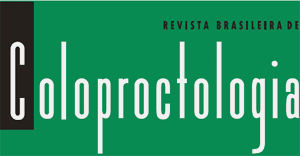The correlation between different cell expression patterns of CEA and the quantities of this antigen in serum is still a controversial subject. OBJECTIVE: The objective of the present study was to verify whether there is a correlation between the distribution pattern of CEA in the neoplastic tissue and CEA levels in serum. METHOD: Twenty-four patients with colorectal cancer were studied. Their mean age was 62.6 years. The measurement of CEA in serum was done by quimioluminiscence technique. To study the tissue expression pattern, the immunohistochemical method with the streptavidin-biotin peroxidase technique was utilized with the use of anti-CEA monoclonal antibodies. The tissue expression pattern was classified as apical, cytoplasmic or stromal, according to the predominant localization of the CEA distribution in the neoplastic tissue. The intensity of the immunoexpression of CEA in the neoplastic tissue was classified as slight, moderate or strong. The Mann-Whitney test was used to compare the CEA levels in serum with the tissue distribution pattern and histological tumor grade. The Kruskal-Wallis test was used to variance analysis and Spearman test was used to analyze the correlation among the studied variables. The significance level of 5% (p<0.05) was adopted. RESULTS: Two patients (8.3%) were classified in Dukes stage A, 12 (50.0%) in B and 10 (41.6%) in C. The mean CEA values in serum in patients with tumors restricted to the intestinal wall (Dukes A + B) were significantly lower than did the tumors with lymph node involvement (p=0.0139). In the 14 patients (58.3%) who presented an apical tissue expression pattern, the mean CEA value in serum was 4.0 ng/ml, while in the 10 patients (41.6%) with expression of cytoplasmic type, the mean CEA value in serum was 31.0 ng/ml (p=0.0002). Independent of the histological grade, the tumors with tissue expression of apical type presented CEA values in serum that were significantly lower than did the tumors with the cytoplasmic pattern (p<0.05). No patients were found to have the stromal pattern of CEA distribution. There was a statistically significant correlation between the tissue expression pattern, CEA values in serum and the Dukes classification. CONCLUSION: The results from the present study allow concluding that tumors with the cytoplasmic pattern of CEA distribution presented serum values of the antigen significantly higher than apical pattern. There is a positive and statistically significant correlation between the different cell distribution patterns of CEA, its levels in serum and the staging of the disease.
Colorectal neoplasm; Carcinoembryonic antigen; Immunohistochemistry; Neoplasm staging








